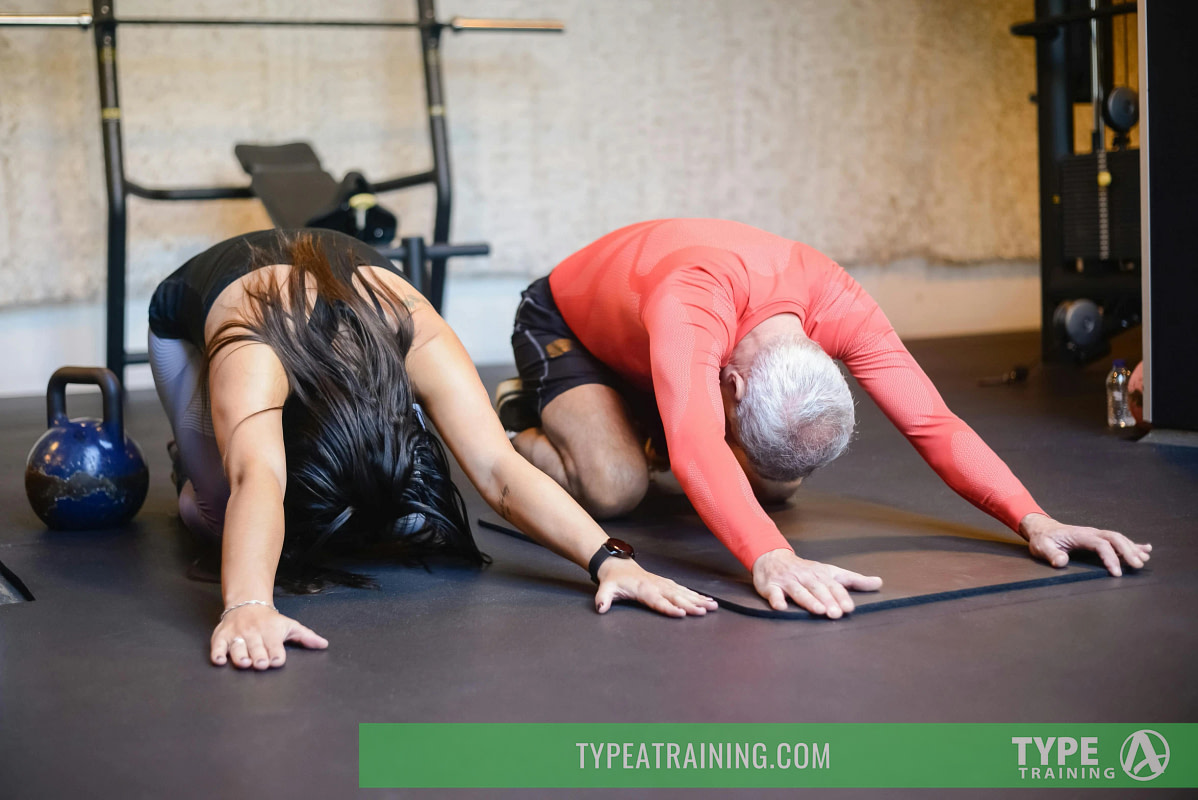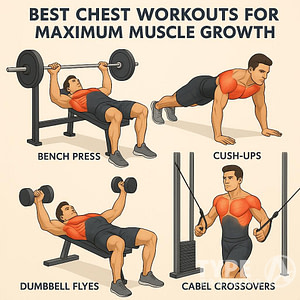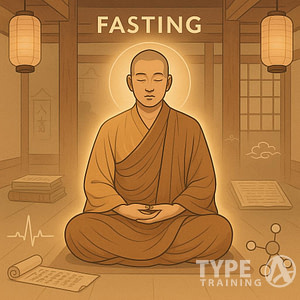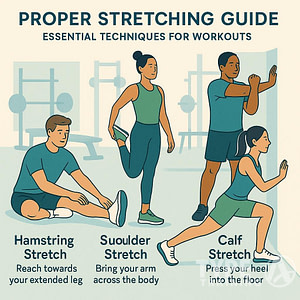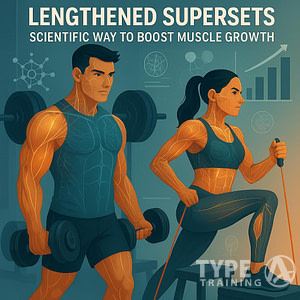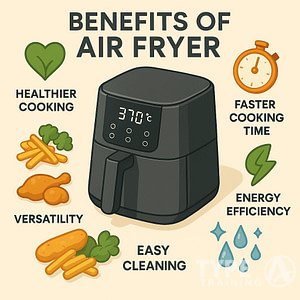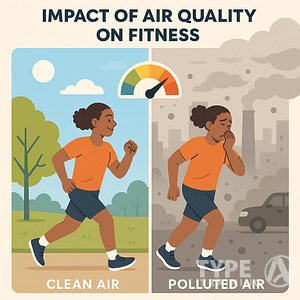Engaging in regular stretching can significantly improve flexibility and increase your range of motion. It also helps in reducing muscle tension and can be an effective method to manage pain associated with tight muscles.
Stretching routines are commonly part of an exercise program; however, sometimes individuals might not be able to stretch effectively on their own due to limited mobility, lack of knowledge, or difficulty in maintaining the discipline of a regular stretching routine.
The concept of assisted stretching has been gaining popularity as it offers personalized sessions where a professional helps you stretch. These services aim to enhance your stretching technique, ensuring proper alignment and maximizing the benefits of stretching.
Popular posts:
Professionals offering assisted stretching could be personal trainers or physical therapists. Their expertise can be particularly beneficial to those who feel their flexibility and range of motion are not improving as expected or who want to ensure safety while stretching to avoid injury.
Key Takeaways
- Regular stretching can increase flexibility and alleviate muscle tension.
- Assisted stretching provides tailored guidance to optimize stretching techniques.
- Professional assistance in stretching may enhance safety and stretching outcomes.
The Importance of Stretching
Stretching plays a crucial role in maintaining your flexibility and overall physical health. When incorporated into your routine, it can lead to pain reduction, tension relief, and enhance your range of motion which may prevent injuries and aid in recovery.
Benefits of Improved Flexibility
Flexibility is vital for your body’s ability to move freely and efficiently. Regular stretching improves your flexibility, which can make daily activities easier and improve your physical performance.
As your flexibility increases, you’ll notice a decrease in discomfort and soreness during and after your workout sessions.
Pain Relief and Tension Reduction
Stretching aids in relaxation and can alleviate both physical and mental tension. It’s particularly beneficial for those suffering from chronic pain, as a regular stretching routine can help manage pain levels effectively.
By elongating the muscles, you can experience immediate relief from built-up tension.
Enhancing Range of Motion
Increasing your range of motion through stretching can lead to better performance in physical activities. It allows you to reach farther and execute movements fully without restriction.
Over time, stretching can aid in improving your joint function and increasing the distance your limbs can move before damage occurs.
Preventing Injury and Promoting Recovery
Regular stretching can reduce the risk of injury by preparing your muscles and joints for the stresses of exercise. By being proactive in your stretching regimen, you can help safeguard against potential strains and sprains.
Additionally, it plays a crucial role in rehabilitation and recovery processes, helping to heal injuries and returning your muscles to their proper function.
Different Types of Stretching
When considering whether to pay for professional help with stretching, it’s helpful to understand the various stretching techniques and their differences. These practices are integral to enhancing flexibility, improving form, and reducing injury risk in your exercise routines.
Dynamic Stretching
Dynamic stretching involves moving parts of your body and gradually increasing reach, speed of movement, or both. It serves as an effective warm-up to prepare your muscles and joints for physical activity.
An example of dynamic stretching is leg swings, which involve moving your leg in a controlled manner that gradually increases in height and speed.
Static Stretching
Static stretches are where you extend a muscle to the point of slight tension and hold the position for a certain period, usually between 15 to 60 seconds.
This type of stretching is beneficial post-exercise to cool down and can improve overall flexibility. Examples include the hamstring stretch or the butterfly stretch, which are performed without movement.
Proprioceptive Neuromuscular Facilitation
Proprioceptive Neuromuscular Facilitation (PNF) is a more advanced form of stretching that often involves a partner. It combines stretching with contracting and relaxing muscles.
Despite its complex name, it’s an effective way to increase flexibility and can also incorporate elements of both static and dynamic stretches.
Active Stretching versus Passive Stretching
Active stretching means you’re actively engaging the opposing muscles of the ones you’re aiming to stretch. For instance, lifting your leg and holding it there without any external support is an active stretch.
On the other hand, passive stretching involves an external force, such as a partner or gravity, aiding in the stretch while your muscles relax, like when a partner helps lift your leg to stretch the hamstrings.
Both techniques can enhance flexibility, but your engagement in active stretching also strengthens the engaged muscles.
Assisted Stretching Explained
Assisted stretching involves a trained professional who guides you through stretches to enhance flexibility and mobility. It’s an interactive practice differing significantly from solo stretching routines.
Role of a Stretch Professional
A stretch professional, including personal trainers who specialize in in-home training, physical therapist, massage therapist, plays a key role in assisted stretching.
These professionals possess the expertise to target specific muscles and employ techniques that can help you achieve a deeper stretch than you might accomplish on your own.
They offer their services in various settings, such as dedicated stretch studios like StretchLab and LYMBR, fitness centers like Massage Envy, or even in the comfort of your home through personal trainers who provide in-home training.
Assisted Stretching Versus Solo Stretching
- Assisted Stretching:
- Involves a flexologist or stretch therapist.
- Can lead to improved flexibility through customized stretching sessions.
- Often includes stretch techniques you cannot easily do alone.
- Solo Stretching:
- You rely on personal knowledge and discipline.
- May not reach the same level of intensity or accuracy as with a professional.
- Easier to perform inconsistently or incorrectly, potentially reducing benefits.
Assisted stretching allows for a dynamic interaction where the stretch pro can give immediate feedback and adjustments, whereas solo stretching can overlook nuances in body positioning and stretch therapy.
Types of Assisted Stretch Sessions
Assisted stretch sessions can vary in style and length. For example, Motion Stretch Studio may offer a session that incorporates dynamic and static techniques targeting multiple muscle groups.
A typical assisted stretch session could be a 30-minute one-on-one with a trained professional, where the focus is on your personal goals and problem areas. The types of sessions may include:
- Full-body stretches
- Focus on specific areas, like the lower back or shoulders
- Techniques like proprioceptive neuromuscular facilitation (PNF)
- Specialized programs for athletes or those with limited mobility
Each session is designed to not only improve muscles’ flexibility but also to enhance overall performance and contribute positively to your fitness regimen. Being guided by an expert can lead to significant assisted stretching benefits, like reduced muscle soreness and improved posture.
Integrating Stretching into Fitness and Therapy
In the realms of physical therapy and sports medicine, incorporating stretching into your routine is pivotal for enhancing flexibility, reducing the risk of injuries, and improving athletic performance.
Whether through targeted exercises in fitness routines or specific therapeutic interventions, stretching is a crucial component for your overall physical well-being.
Incorporating Stretching in Physical Therapy
In physical therapy, stretching is used to rehabilitate muscle groups that have been impacted by injury or surgery.
Your therapist may guide you through stretches designed to restore range of motion and alleviate pain. As research underscores the importance of tailored stretching programs, they often include exercises like yoga or pilates to meet the specific rehabilitative needs of patients.
It’s important to follow the advised protocol to ensure effective healing and prevent further injury.
Stretching in Sports Medicine
For athletes, sports medicine integrates stretching to not only treat but also prevent sports-related injuries.
Stretching programs are customized to sport-specific demands, focusing on muscle groups that are frequently engaged in your athletic activities.
Professionals in sports medicine leverage stretching to enhance athletic performance and incorporate it into warm-up and cool-down routines to prepare the body for the stresses of exercise.
Stretching as Part of Fitness Routines
In the fitness industry, stretching is often an integrated part of fitness routines, complementing strength training and cardiovascular exercises. It helps in maintaining flexibility, which is essential for a well-rounded fitness regimen.
Regular stretching can aid in preventing the stiffness and soreness that can follow rigorous workouts. Incorporating dynamic stretches prior to your routine prepares your body, whereas static stretches post-exercise can aid in recovery and relaxation.
Remember, while stretching is beneficial, it’s vital to perform stretches correctly to avoid causing any undue stress to your body.
Consulting fitness professionals or therapists can ensure that your stretching routine is safe and effective for your goals.
Understanding the Physiology of Stretching
Stretching can profoundly impact your muscular health, blood circulation, and overall body balance. In this section, we’ll explore the key physiological components involved in stretching, which are critical to enhance and maintain your muscular system and physical well-being.
Muscle Anatomy and Function
Your muscles are complex structures made up of fibers that contract and relax to produce movement. Myofascial release, a technique commonly used during assisted stretching sessions, specifically targets the tissue surrounding your muscles, known as fascia.
This method can help relieve aches and pains by reducing tension in the fascia, thus influencing muscle function.
Impact on Blood Flow and Fascia
As you stretch, your muscles demand more blood to accommodate the change in tension, which increases blood flow.
This augmented circulation can distribute more nutrients and oxygen to your muscles and joints, enhancing the health of your fascia.
Proper stretching can help prevent the fascia from becoming tight, aiding in maintaining your posture and reducing discomfort.
Balance, Posture, and Muscle Strength
Consistent stretching encourages improved balance and posture by aligning your joints and strengthening the supporting muscles.
Building muscle strength is not just about power; it also involves flexibility, which is vital for maintaining joint health and avoiding injuries.
Prioritizing stretches that foster alignment and develop strength can positively influence your balance and posture.
Techniques to Enhance Stretching Efficacy
Improving your stretching routine can lead to better flexibility and less tension. Here are specific methods to optimize the effectiveness of your stretching exercises.
Foam Rolling and Myofascial Release
Foam rolling before or after stretching can help release muscle tightness and improve blood flow.
When using a foam roller or similar tool, pay attention to areas of tension and apply sustained pressure to these points, a technique known as myofascial release.
This practice can help in breaking up knots and may make subsequent stretches more efficient, contributing to a more effective full-body stretch.
Breathing and Relaxation Techniques
Proper breathing is essential for maximizing your stretch.
Deep inhalation through the nose followed by a slow exhale through the mouth can aid in relaxation and enable muscles to stretch further.
Concentrate on breathing deeply to encourage a parasympathetic nervous system response, which is responsible for the body’s ‘rest and digest’ state, thereby promoting relaxation and reducing muscle tension.
Using Props and Equipment
Incorporating props—such as stretching straps, bolsters, and blocks—can enhance your stretching techniques, offering support and allowing you to hold stretches longer.
For some, equipment like a massage table might be beneficial, especially for assisted stretching sessions with a professional.
Additionally, including modern techniques like cryotherapy as part of your routine could potentially reduce inflammation and aid in muscle recovery, though its direct impact on stretching efficacy is more indirect and should be approached carefully.
Safety and Considerations in Stretching
Before embarking on a stretching routine, it is crucial to understand the safe practices and contextual needs that ensure your efforts are beneficial rather than harmful. Addressing safety and customizing stretching to your personal needs can help prevent unnecessary injury or discomfort.
Identifying When to Avoid Stretching
You should avoid stretching if you have a serious injury or if stretching causes pain rather than mild discomfort.
An acute injury often requires rest and possibly medical attention; stretching an injured area can exacerbate the issue.
It is also important to note that if you feel pain during a stretch, it is a clear sign that you should stop and reassess your technique or the appropriateness of the stretch for your condition.
Communicating with Professionals
Effective communication with a physical therapist or personal trainer is essential.
These professionals can provide tailored medical advice and insight into the proper form and techniques that align with your goals.
When you pay someone to help you stretch, ensure you express any sensations of discomfort and receive guidance on how to adjust the stretch for a safer execution.
Customizing Stretching to Individual Needs
Your stretching routine should be customized to fit your individual needs, taking into account any limitations or areas requiring special attention.
Adjust the intensity and duration of each stretch to avoid discomfort, and focus on techniques that benefit your current fitness level and mobility range.
A physical therapist or personal trainer can help design a program that specifically targets the muscles and areas you need to improve for better flexibility and strength.
The Stretching Experience
Investing in a professional stretching session can offer you a chance to experience deeper stretches and targeted muscle relief. You’ll gain insights into proper techniques for stretching areas such as the neck, hips, quads, hip flexors, and hamstrings, ensuring that your goals align with the recovery process guided by fitness professionals.
What to Expect in a Stretching Session
During your stretching session, expect to go through motions where fitness professionals help you hold stretches for specific periods, targeting key muscle groups like your hips, neck, quads, hamstrings, and hip flexors.
These assisted stretching routines typically involve a sequence where each stretch is held for more than 30 seconds, facilitating a deeper release and improved flexibility.
- Preparation: Begin with a warm-up to ready your muscles.
- Active Stretching: Professionals may use techniques such as the contract-and-relax method.
- Assisted Stretching: Experience assisted stretching where the professional helps you achieve stretches that are difficult on your own.
- Cool-down: End with gentle movements to soothe the muscles.
Selecting the Right Stretch Provider
Finding the right stretch provider is crucial:
- Credentials: Look for certified fitness professionals who specialize in assisted stretching.
- Techniques Used: Ensure they offer a variety of stretches and focus on the muscle groups you’re looking to improve.
- Atmosphere: The environment at stretch studios should be conducive to relaxation and free from distractions.
Consider trying out a few different providers to see which style and approach work best for you.
Evaluating Progress and Setting Goals
To get the most out of your sessions, you should regularly evaluate progress towards your flexibility and recovery goals.
- Set clear, achievable goals for each muscle group you’re working on.
- Keep a record of your flexibility improvements over time.
- Communicate with your provider to adjust techniques and target areas as needed.
Progress may come incrementally, but with consistent effort and guidance, you will likely see improvements.
Supplementing Stretching with Other Modalities
When considering enhancing your stretching routine, incorporating additional methods can maximize the benefits for your well-being and quality of life. Let’s explore how massage, exercise, strength training, and technology can work synergistically with your stretching regimen.
Incorporating Massage for Optimal Benefits
Massage can significantly complement your stretching routine by relaxing your muscles and improving circulation.
When you receive a massage from a qualified therapist, it can aid in the release of muscle tension which often hinders flexibility.
Additionally, research suggests that massage may enhance the healing process, thereby speeding up recovery from workouts or injuries.
Exercise and Strength Training Synergy
Integrating exercise and strength training with stretching is key for building a well-rounded fitness routine.
For instance, Pilates and yoga are forms of exercise that emphasize control and flexibility, often involving dynamic stretching as part of their sequences.
Strength training, on the other hand, builds the muscle support needed for effective stretching. Together, they work to improve your overall sports performance and reduce the risk of injury.
The Role of Technology in Stretching
Finally, technology in sports medicine and well-being has made significant strides, offering various tools to aid in stretching.
Apps and online platforms give you access to guided stretching routines while wearables track your progress and provide data on your flexibility.
This intersection of technology and stretching has opened new avenues for personalizing your fitness journey, ensuring you get the most out of your efforts to maintain and enhance your range of motion.
The Future of Stretching in Wellness
As the wellness landscape evolves, stretching practices are anticipated to undergo transformative changes, shaped by innovations in assisted stretching, developments in fitness and rehabilitation, and industry predictions.
Innovations in Assisted Stretching
Emerging technology is revolutionizing how you experience assisted stretching.
Wearable technologies and smart fabrics are in development to provide feedback on posture and stretching efficiency.
Sessions with a professional flexologist may get enhanced with data-driven insights, enabling personalized stretch routines that dovetail perfectly with your body’s needs.
Emerging Trends in Fitness and Rehabilitation
In fitness and rehabilitation, the integration of stretching with sports medicine is becoming more pronounced.
In the near future, you might see programs where physical therapists work alongside trained massage therapists to offer comprehensive recovery and flexibility plans.
Moreover, research in biomechanics is paving the way for methods that couple assisted stretching with dynamic movement, aimed at optimizing sport performance and injury prevention.
Predictions for the Stretching Industry
The stretching industry is set to expand its reach.
Predictions suggest that by harnessing AI and machine learning, stretching platforms could provide instant assessments and adjust protocols in real time.
In rehabilitation, cutting-edge robotics could aid in delivering precision stretches, minimizing human error and providing consistent treatment outcomes.
The confluence of technology and traditional stretching has the potential to elevate your wellness to unprecedented levels.
Frequently Asked Questions
Navigating the world of professional assisted stretching can be complex. This section aims to answer your most pressing questions to make informed decisions about these services.
What are the benefits of professional assisted stretching services?
Assisted stretching services provided by experts can enhance your flexibility, improve your range of motion, and may even boost blood flow to your muscles.
Consultations with StretchLab also offer personalized stretching routines that are difficult to attain on your own.
How does the cost of a StretchLab monthly membership compare to other stretching services?
Pricing for StretchLab and other stretching services will vary based on location, session length, and membership options.
Typically, the price can range from $40 for a short session to substantially more for longer, in-depth sessions.
What should one expect from a first-time visit to a stretch therapy session?
At your first visit, you can anticipate a personalized evaluation to determine your stretching needs, which will inform a customized stretching plan.
A professional, often called a ‘flexologist’, will guide you through stretches, ensuring proper technique and maximization of benefits.
Are there any significant differences between Stretch Zone and other stretching studios?
Stretch Zone employs a proprietary stretching method, which may differ from the techniques used at other studios like StretchLab or Stretch*d.
Each studio might focus on specific stretching philosophies and offer unique benefits, so consider exploring a few to find your best fit.
How do I find qualified professionals for assisted stretching near me?
To find certified stretching professionals, check local fitness centers, therapeutic clinics, or dedicated stretch studios.
Many offer certified flexologists or therapists specialized in assisted stretching.
What do physical therapists typically include in their range of services regarding assisted stretching?
Physical therapists often incorporate assisted stretching into a broader rehabilitative program. The focus is on increasing flexibility and promoting recovery from injuries. They also optimize movement patterns for both athletic performance and everyday activities.





